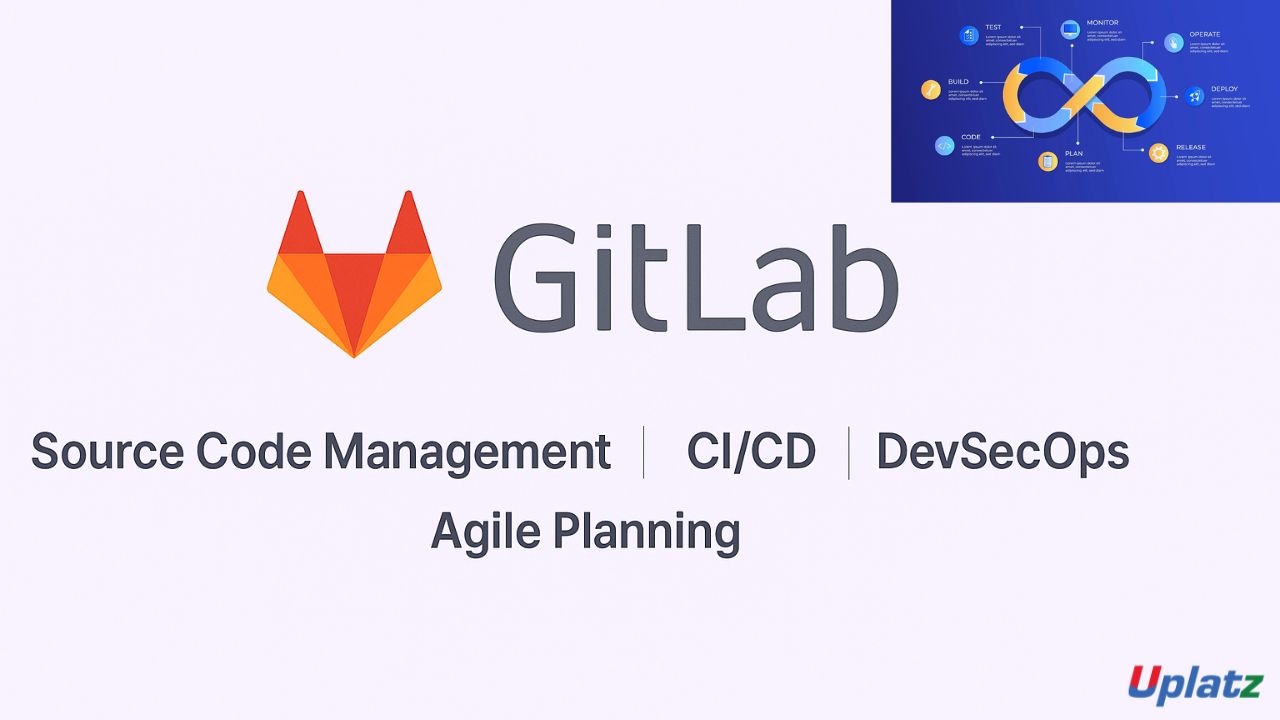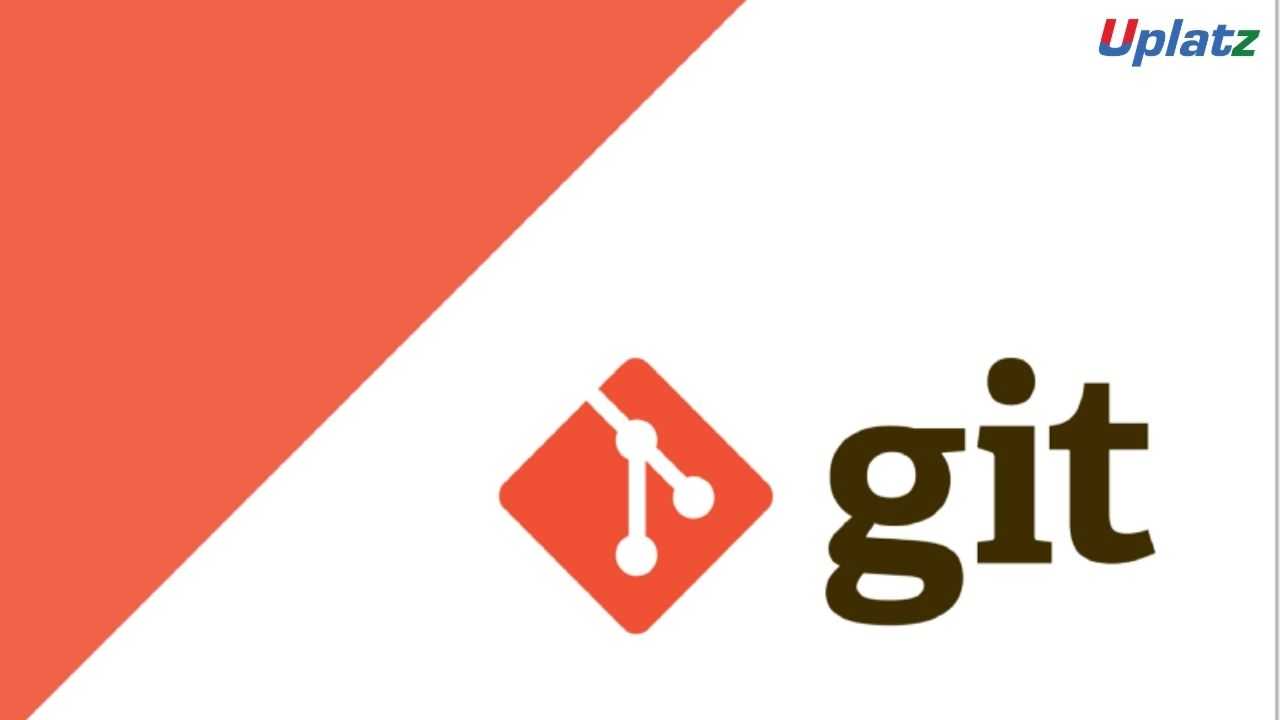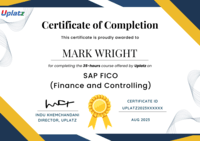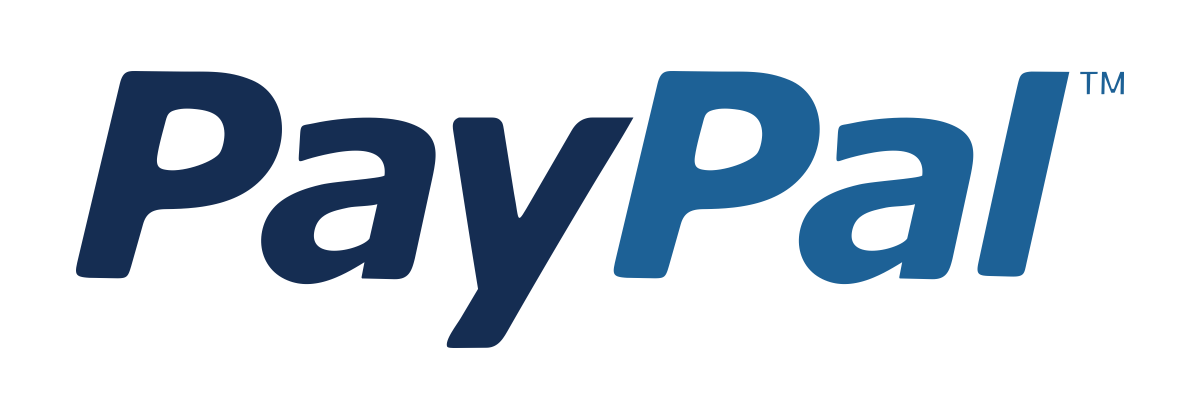GitHub Actions
Learn GitHub Actions from scratch and master workflow automation, CI/CD pipelines, and DevOps integration directly within your GitHub repositories.
Course Duration: 10 Hours
Preview GitHub Actions course
Price Match Guarantee Full Lifetime Access Access on any Device Technical Support Secure Checkout Course Completion Certificate 91% Started a new career
BUY THIS COURSE (
91% Started a new career
BUY THIS COURSE (GBP 12 GBP 29 )-
 82% Got a pay increase and promotion
82% Got a pay increase and promotion
New & Hot
Trending
Job-oriented
Coming Soon
Students also bought -
-

- GitLab CI/CD
- 10 Hours
- GBP 12
- 10 Learners
-

- Git and GitHub
- 5 Hours
- GBP 12
- 353 Learners
-

- API Testing
- 40 Hours
- GBP 12
- 589 Learners

GitHub Actions - Automate Workflows for Modern DevOps – Online Course
GitHub Actions is a comprehensive, hands-on course designed to equip developers, DevOps engineers, and tech professionals with in-demand skills for automating software workflows using GitHub’s powerful native automation platform—GitHub Actions. With the rise of continuous integration and continuous deployment (CI/CD), GitHub Actions enables teams to automate everything from builds and tests to deployments and notifications, all within the GitHub ecosystem.
At its core, GitHub Actions empowers users to define custom workflows using YAML syntax that reacts to GitHub events—like pushes, pull requests, or issue comments. These workflows consist of jobs made up of steps that run actions or scripts on virtual machines, containers, or even self-hosted runners. This event-driven, modular design allows for powerful automation without leaving your repository.
What sets GitHub Actions apart is its seamless integration with the GitHub platform. You don’t need external CI/CD tools or plugins—just your GitHub repository and a .github/workflows directory. GitHub Actions supports matrix builds, conditional execution, secret management, third-party marketplace actions, and deployment strategies across multiple environments and cloud providers.
In this course, you’ll start with foundational knowledge: understanding workflow syntax, setting up jobs and runners, and using built-in and marketplace actions. From there, you’ll dive into real-world CI/CD pipelines for Node.js, Python, Java, and containerized apps with Docker. You’ll learn how to:
- Build, test, and deploy applications
- Trigger workflows on events like pull requests or releases
- Securely manage environment secrets
- Automate issue triaging and labeling
- Deploy to AWS, Azure, Firebase, and GitHub Pages
The course emphasizes practical, project-based learning. You’ll build fully functional GitHub workflows that:
- Run tests and lint checks on code changes
- Automatically merge PRs that pass validations
- Push Docker images to GitHub Container Registry
- Notify teams via Slack or email on failed builds
- Deploy static websites or React apps to GitHub Pages
By the end of this course, you’ll not only be able to automate your own development lifecycle—you’ll be able to design, optimize, and troubleshoot CI/CD workflows for enterprise-scale projects. Whether you work on open-source projects or enterprise repositories, GitHub Actions helps you deliver faster, safer, and smarter.
This course is ideal for:
- Developers seeking DevOps automation skills
- DevOps engineers working with GitHub-hosted codebases
- QA engineers implementing test pipelines
- Students and freelancers building modern applications
- Teams migrating from tools like Jenkins, Travis CI, or CircleCI
GitHub Actions is unique because of its accessibility, tight GitHub integration, and active community marketplace. You don’t need to learn a new tool—you simply enhance your existing GitHub workflow. Whether you’re automating deployments, managing releases, or running scheduled tasks, GitHub Actions is your unified solution.
Course/Topic 1 - Coming Soon
-
The videos for this course are being recorded freshly and should be available in a few days. Please contact info@uplatz.com to know the exact date of the release of this course.
Course Objectives Back to Top
By the end of this course, you will be able to:
- Understand the architecture and syntax of GitHub Actions
- Define and configure workflows using YAML files
- Automate builds, tests, and deployments for any language
- Use reusable actions from the GitHub Marketplace
- Secure secrets and manage environment variables
- Deploy to cloud platforms like AWS, Azure, Firebase
- Create matrix builds for multiple environments
- Integrate CI/CD pipelines into any GitHub-based project
Course Syllabus Back to Top
GitHub Actions Course Syllabus
Module 1: Introduction to GitHub Actions
- What is GitHub Actions?
- Key Concepts: Workflow, Jobs, Steps, Actions
- Use Cases and Benefits
Module 2: Creating Your First Workflow
- Workflow Triggers (push, pull_request, schedule)
- YAML Syntax Overview
- Hello World Workflow
Module 3: Jobs and Runners
- Understanding Runners
- Hosted vs Self-hosted Runners
- Job Dependencies and Strategy
Module 4: Using GitHub Marketplace Actions
- Built-in vs Marketplace Actions
- Referencing Third-party Actions
- Writing Reusable Actions
Module 5: Environment Variables and Secrets
- Defining Secrets in GitHub
- Using Secrets in Workflows
- Contexts and Expressions
Module 6: CI/CD for Projects
- Node.js CI/CD Pipeline
- Python Testing and Deployment
- Java Maven Integration
- Docker Build and Publish
Module 7: Deployment Workflows
- Deploying to GitHub Pages
- Firebase Hosting Deployment
- AWS S3 and Azure Web Apps
Module 8: Workflow Optimization
- Caching Dependencies
- Matrix Builds and Parallel Jobs
- Manual Approvals with workflow_dispatch
Module 9: Advanced GitHub Actions
- Using Composite Actions
- Branch Protection Rules with Actions
- GitOps and Infrastructure as Code
Module 10: Real-World Projects
- Auto PR Merge + Slack Notification
- Static Site Deployment with Custom Domain
- Kubernetes Deployment from GitHub Actions
Module 11: GitHub Actions Interview Questions & Answers
-
Common Scenarios
-
Debugging Tips
-
Best Practices
Certification Back to Top
After completing this course, learners will receive an official Certificate of Completion from Uplatz, showcasing their expertise in GitHub Actions and workflow automation. This certification verifies the learner’s ability to create and manage CI/CD pipelines, deploy applications, and build advanced DevOps workflows within GitHub. It enhances your professional credibility and adds significant value to your portfolio, especially when applying for DevOps, software engineering, or automation roles.
Career & Jobs Back to Top
GitHub Actions is rapidly becoming the industry-standard automation tool for GitHub-based repositories. Mastering this skill opens doors to roles like:
- DevOps Engineer
- Automation Engineer
- CI/CD Pipeline Specialist
- Cloud Deployment Engineer
- GitHub Platform Engineer
With more than 90% of open-source and private projects hosted on GitHub, organizations across all sectors are looking for professionals who can leverage GitHub Actions to reduce development overhead and ensure reliable releases. From startups to large enterprises, GitHub Actions proficiency boosts your competitiveness and relevance in modern development workflows.
Interview Questions Back to Top
1. What is GitHub Actions?
GitHub Actions is a CI/CD and automation tool integrated into GitHub that enables users to automate workflows for building, testing, and deploying code.
GitHub Actions is a CI/CD and automation tool integrated into GitHub that enables users to automate workflows for building, testing, and deploying code.
2. How does a GitHub Actions workflow get triggered?
Workflows are triggered by events like push, pull_request, release, or scheduled intervals using cron.
Workflows are triggered by events like push, pull_request, release, or scheduled intervals using cron.
3. What are jobs and steps in GitHub Actions?
A job is a set of steps executed on the same runner. Each step runs a command or action. Jobs can run sequentially or in parallel.
A job is a set of steps executed on the same runner. Each step runs a command or action. Jobs can run sequentially or in parallel.
4. What is the difference between hosted and self-hosted runners?
Hosted runners are managed by GitHub and come pre-installed with software. Self-hosted runners are user-managed systems where workflows execute.
Hosted runners are managed by GitHub and come pre-installed with software. Self-hosted runners are user-managed systems where workflows execute.
5. How do you secure secrets in GitHub Actions?
Secrets are encrypted values stored in the repository or organization settings and accessed via the secrets context in workflows.
Secrets are encrypted values stored in the repository or organization settings and accessed via the secrets context in workflows.
6. What is a matrix build?
Matrix builds allow running jobs in parallel with different configurations (e.g., multiple Node.js versions or OS environments).
Matrix builds allow running jobs in parallel with different configurations (e.g., multiple Node.js versions or OS environments).
7. Can GitHub Actions deploy to cloud platforms?
Yes, GitHub Actions supports deployment to AWS, Azure, Google Cloud, Firebase, and others via built-in or marketplace actions.
Yes, GitHub Actions supports deployment to AWS, Azure, Google Cloud, Firebase, and others via built-in or marketplace actions.
8. What are reusable actions?
Reusable actions are custom workflows or logic defined in separate repositories or directories that can be invoked across workflows.
Reusable actions are custom workflows or logic defined in separate repositories or directories that can be invoked across workflows.
9. What is workflow_dispatch used for?
workflow_dispatch allows manually triggering a workflow via the GitHub UI, often used for manual deployments or approvals.
workflow_dispatch allows manually triggering a workflow via the GitHub UI, often used for manual deployments or approvals.
10. How do you debug a failed GitHub Actions job?
Check the job logs in the Actions tab. Use run: echo and env: for output inspection and enable ACTIONS_STEP_DEBUG=true for deeper insights.
Check the job logs in the Actions tab. Use run: echo and env: for output inspection and enable ACTIONS_STEP_DEBUG=true for deeper insights.
Course Quiz Back to Top
FAQs
Back to Top
Q1. What are the payment options?
A1. We have multiple payment options:
1) Book your course on our webiste by clicking on Buy this course button on top right of this course page
2) Pay via Invoice using any credit or debit card
3) Pay to our UK or India bank account
4) If your HR or employer is making the payment, then we can send them an invoice to pay.
Q2. Will I get certificate?
A2. Yes, you will receive course completion certificate from Uplatz confirming that you have completed this course with Uplatz. Once you complete your learning please submit this for to request for your certificate https://training.uplatz.com/certificate-request.php
Q3. How long is the course access?
A3. All our video courses comes with lifetime access. Once you purchase a video course with Uplatz you have lifetime access to the course i.e. forever. You can access your course any time via our website and/or mobile app and learn at your own convenience.
Q4. Are the videos downloadable?
A4. Video courses cannot be downloaded, but you have lifetime access to any video course you purchase on our website. You will be able to play the videos on our our website and mobile app.
Q5. Do you take exam? Do I need to pass exam? How to book exam?
A5. We do not take exam as part of the our training programs whether it is video course or live online class. These courses are professional courses and are offered to upskill and move on in the career ladder. However if there is an associated exam to the subject you are learning with us then you need to contact the relevant examination authority for booking your exam.
Q6. Can I get study material with the course?
A6. The study material might or might not be available for this course. Please note that though we strive to provide you the best materials but we cannot guarantee the exact study material that is mentioned anywhere within the lecture videos. Please submit study material request using the form https://training.uplatz.com/study-material-request.php
Q7. What is your refund policy?
A7. Please refer to our Refund policy mentioned on our website, here is the link to Uplatz refund policy https://training.uplatz.com/refund-and-cancellation-policy.php
Q8. Do you provide any discounts?
A8. We run promotions and discounts from time to time, we suggest you to register on our website so you can receive our emails related to promotions and offers.
Q9. What are overview courses?
A9. Overview courses are 1-2 hours short to help you decide if you want to go for the full course on that particular subject. Uplatz overview courses are either free or minimally charged such as GBP 1 / USD 2 / EUR 2 / INR 100
Q10. What are individual courses?
A10. Individual courses are simply our video courses available on Uplatz website and app across more than 300 technologies. Each course varies in duration from 5 hours uptop 150 hours.
Check all our courses here https://training.uplatz.com/online-it-courses.php?search=individual
Q11. What are bundle courses?
A11. Bundle courses offered by Uplatz are combo of 2 or more video courses. We have Bundle up the similar technologies together in Bundles so offer you better value in pricing and give you an enhaced learning experience.
Check all Bundle courses here https://training.uplatz.com/online-it-courses.php?search=bundle
Q12. What are Career Path programs?
A12. Career Path programs are our comprehensive learning package of video course. These are combined in a way by keeping in mind the career you would like to aim after doing career path program. Career path programs ranges from 100 hours to 600 hours and covers wide variety of courses for you to become an expert on those technologies.
Check all Career Path Programs here https://training.uplatz.com/online-it-courses.php?career_path_courses=done
Q13. What are Learning Path programs?
A13. Learning Path programs are dedicated courses designed by SAP professionals to start and enhance their career in an SAP domain. It covers from basic to advance level of all courses across each business function. These programs are available across SAP finance, SAP Logistics, SAP HR, SAP succcessfactors, SAP Technical, SAP Sales, SAP S/4HANA and many more
Check all Learning path here https://training.uplatz.com/online-it-courses.php?learning_path_courses=done
Q14. What are Premium Career tracks?
A14. Premium Career tracks are programs consisting of video courses that lead to skills required by C-suite executives such as CEO, CTO, CFO, and so on. These programs will help you gain knowledge and acumen to become a senior management executive.
Q15. How unlimited subscription works?
A15. Uplatz offers 2 types of unlimited subscription, Monthly and Yearly.
Our monthly subscription give you unlimited access to our more than 300 video courses with 6000 hours of learning content. The plan renews each month. Minimum committment is for 1 year, you can cancel anytime after 1 year of enrolment.
Our yearly subscription gives you unlimited access to our more than 300 video courses with 6000 hours of learning content. The plan renews every year. Minimum committment is for 1 year, you can cancel the plan anytime after 1 year.
Check our monthly and yearly subscription here https://training.uplatz.com/online-it-courses.php?search=subscription
Q16. Do you provide software access with video course?
A16. Software access can be purchased seperately at an additional cost. The cost varies from course to course but is generally in between GBP 20 to GBP 40 per month.
Q17. Does your course guarantee a job?
A17. Our course is designed to provide you with a solid foundation in the subject and equip you with valuable skills. While the course is a significant step toward your career goals, its important to note that the job market can vary, and some positions might require additional certifications or experience.
Remember that the job landscape is constantly evolving. We encourage you to continue learning and stay updated on industry trends even after completing the course. Many successful professionals combine formal education with ongoing self-improvement to excel in their careers. We are here to support you in your journey!
Q18. Do you provide placement services?
A18. While our course is designed to provide you with a comprehensive understanding of the subject, we currently do not offer placement services as part of the course package. Our main focus is on delivering high-quality education and equipping you with essential skills in this field.
However, we understand that finding job opportunities is a crucial aspect of your career journey. We recommend exploring various avenues to enhance your job search:
a) Career Counseling: Seek guidance from career counselors who can provide personalized advice and help you tailor your job search strategy.
b) Networking: Attend industry events, workshops, and conferences to build connections with professionals in your field. Networking can often lead to job referrals and valuable insights.
c) Online Professional Network: Leverage platforms like LinkedIn, a reputable online professional network, to explore job opportunities that resonate with your skills and interests.
d) Online Job Platforms: Investigate prominent online job platforms in your region and submit applications for suitable positions considering both your prior experience and the newly acquired knowledge. e.g in UK the major job platforms are Reed, Indeed, CV library, Total Jobs, Linkedin.
While we may not offer placement services, we are here to support you in other ways. If you have any questions about the industry, job search strategies, or interview preparation, please dont hesitate to reach out. Remember that taking an active role in your job search process can lead to valuable experiences and opportunities.
Q19. How do I enrol in Uplatz video courses?
A19. To enroll, click on "Buy This Course," You will see this option at the top of the page.
a) Choose your payment method.
b) Stripe for any Credit or debit card from anywhere in the world.
c) PayPal for payments via PayPal account.
d) Choose PayUmoney if you are based in India.
e) Start learning: After payment, your course will be added to your profile in the student dashboard under "Video Courses".
Q20. How do I access my course after payment?
A20. Once you have made the payment on our website, you can access your course by clicking on the "My Courses" option in the main menu or by navigating to your profile, then the student dashboard, and finally selecting "Video Courses".
Q21. Can I get help from a tutor if I have doubts while learning from a video course?
A21. Tutor support is not available for our video course. If you believe you require assistance from a tutor, we recommend considering our live class option. Please contact our team for the most up-to-date availability. The pricing for live classes typically begins at USD 999 and may vary.









